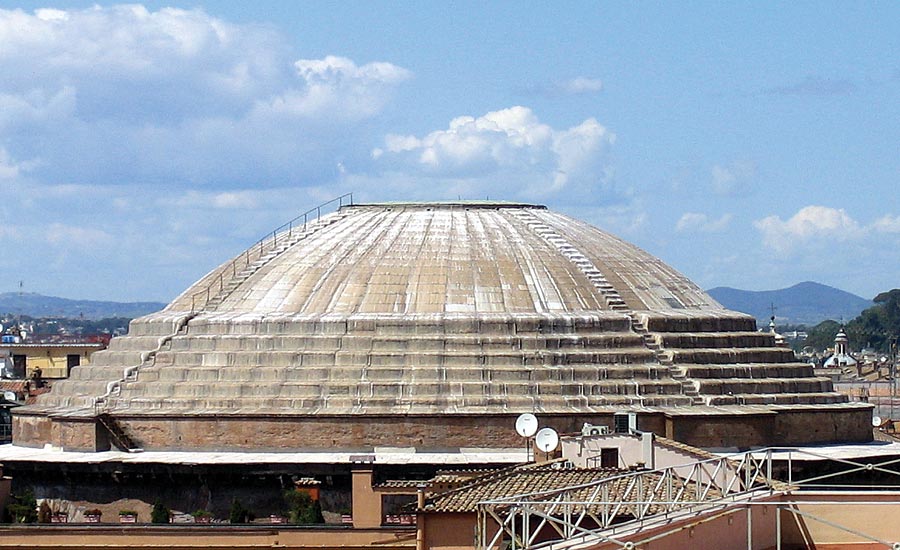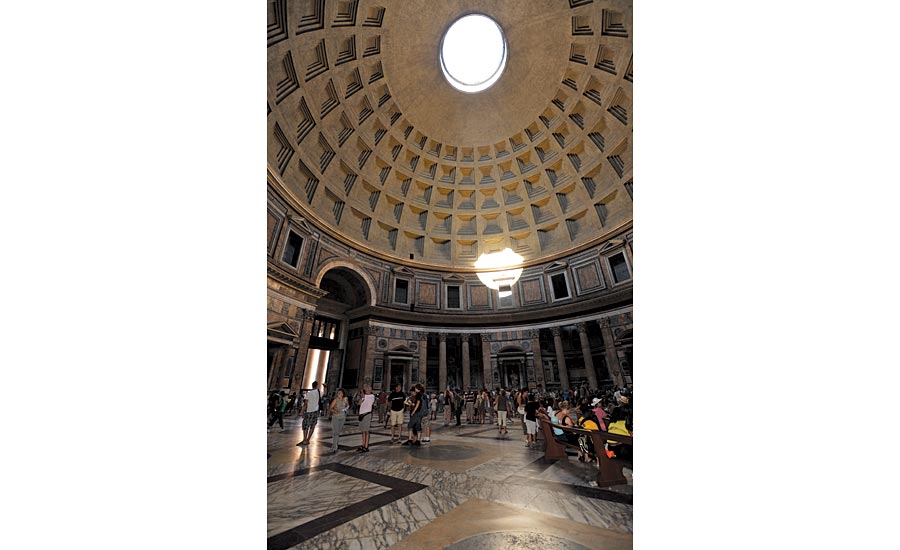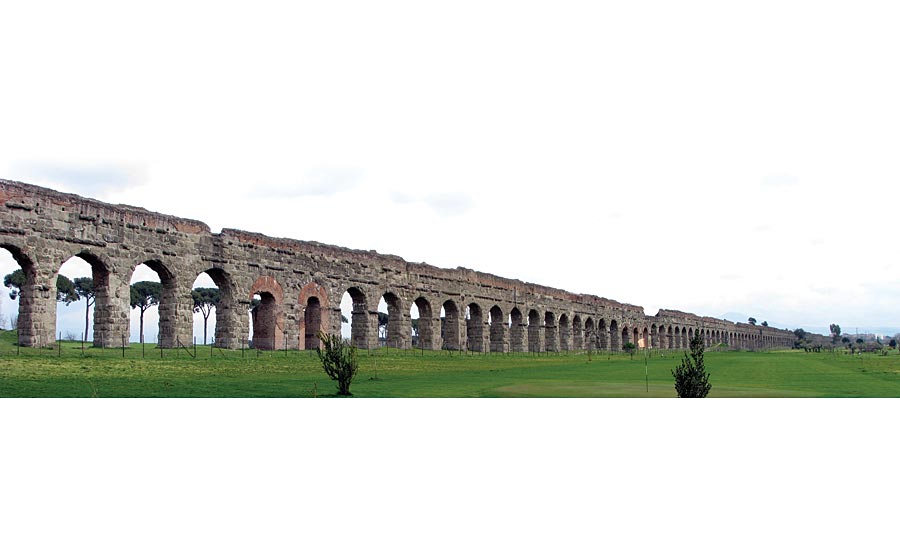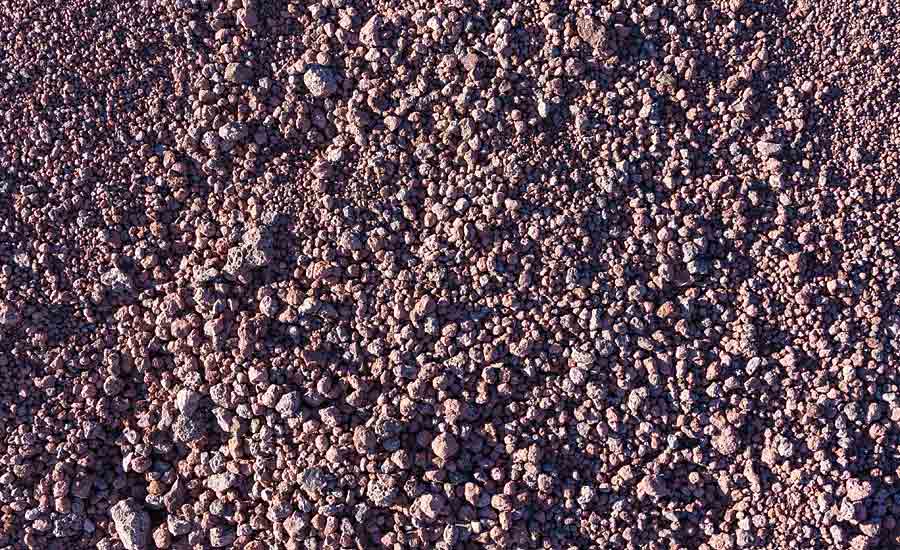The History and Recipe For Roman Cement
The history of exotic cement is so relevant that people are still studying its durability, centuries upon centuries later.





*courtesy of photovolcanica.com





The secret of Roman cement was the mixing of lime with pozzolana, called harena fossicia or “pit sand” by Vitruvius. Pozzolana was distinguished from river and sea sands (the common harena) and receives this contemporary name from the town of Pozzuoli (Roman Puteoli, neighboring Baiae) in the Bay of Naples, just 25 miles east of Mt. Vesuvius. The entire region is heavily covered with meter thick beds of pozzolana, volcanic pumice and ash from previous eruptions.
In addition to Pozzuoli, Vitruvius mentions deposits of pit sand at Mount Aetna and there is evidence indicating the Roman exploitation of German trass, a sedimentary stone of lightly compacted volcanic ash having similar properties. Although the Romans typically are credited with inventing pozzolana-based cement, there is archaeological evidence that the Greeks were using their own pozzolana from the eruption at Thera (Santorini) for water cisterns as early as 600 B.C., as well as for methods of wall construction only later adopted by the Romans.
"There is also a kind of powder which from natural causes produces astonishing results. It is found in the neighborhood of Baiae and in the country belonging to the towns round about Mt. Vesuvius. This substance, when mixed with lime and rubble, not only lends strength to buildings of other kinds, but even when piers of it are constructed in the sea, they set hard under water."
— VITRUVIUS, THE TEN BOOKS OF ARCHITECTURE, BOOK II, CHAPTER 6 POZZOLANA
Roman Cement
The volcanic ash constituting pozzolana is high in amorphous silica and also contains finely constituted alumina. “Amorphous” literally means “without form.” Under most natural conditions silica organizes itself into a highly stable, non-reactive, crystalline state such as sand or quartz. However, with the explosive debris of certain volcanic eruptions, the disorganized molten silica is finely dispersed in the atmosphere where it rapidly cools before having time to crystallize, precipitating as a fine ash. This ash is relatively inert by itself or even in the presence of water. However, blended with lime the resulting mortar “awakens” as a Roman cement sharing many of the properties and specifications of natural cement that we’ll consider in a subsequent article.
Roman cement was used for exterior stucco, plastering water cisterns, the mortar of aqueducts, and even for casting the greatest unreinforced dome in human history: the Pantheon. The very same sources of pozzolana from Vesuvius, Aetna, Santorini and German trass are all still mined and used in similar ways today.
Other Traditional Pozzolans
The term “pozzolans” has extended to man-made aggregates and powders that have a similar hydraulic effect when blended with lime. Pliny the Elder indicated one used extensively by the Romans over two thousand years ago:
“There are three kinds of sand. Sand which has been quarried (pozzolana) requires one-fourth its weight of lime, while river sand or sea sand requires one third. If one third of pounded earthenware is also added, the mortar will be improved.”
The improvement he referred to was the moderate hydraulic action imparted by finely ground burnt terra cotta which has been used for millennia by the Minoans, Greeks, Romans, Indians (surkhi) and Egyptians (homra). In the Veneto it is called “cocciopesto,” quite literally referring to “baked and crushed” terra cotta. Cocciopesto lime has been traditionally used for stucco, as well as plaster floors in Venice and imparts a superior resistance to the relentless attack of salts in the brackish water of the Venetian lagoon.
Similar to the previously considered natural hydraulic lime mortars, these lime plasters with ground terra cotta or brick crushed to powder are not as impermeable or brittle as Roman Cements and are very useful for plaster and stucco applications.
Modern Industrial Pozzolans
Today, a number of pozzolans have been discovered, many of them being waste products of industry. For the most part, they are utilized as additions to Portland and other artificial cements to alter or enhance their density, cure time, permeability and compressive strength. However, ongoing research is yielding some promising applications for use with lime mortars and plasters. Whether the given pozzolan is added to quicklime, dolomitic lime, lime putty or a lime hydrate and the quantity of pozzolan added are all factors that must be taken into consideration when formulating a pozzolanic plaster as a wide variety of properties can result. An in-depth consideration of those variations is beyond the scope of this article; however, I’ll attempt to consider the basic properties of a few of the most commonly available pozzolans.
Ground granulated blast-furnace slag is produced in steel production by quenching molten iron slag with water or steam. The slag represents impurities in the iron ore including calcite, dolomite, silicates and aluminates. The high temperature opens up the silicates and aluminates to an amorphous, reactive state and the rapid cooling preserves it.
Because of the presence of both lime and reactive compounds, slag is the only one of the pozzolans that already has its own cementitious properties when ground to a fine powder.
Pulverized fuel ash are the finest particles of suspended clay contaminants generated by coal fired power stations. Whereas this ash used to pour into the atmosphere, environmental regulations now require filtration. The precise composition of the fly ash varies with mineral composition and clay infiltration of the clay deposit; however, the ones useful as pozzolans are high in silicate and aluminate compounds.
Metakaolin is a reactive aluminosilicate produced from burning and grinding kaolin, white china clay. Unlike other pozzolans, it is not a byproduct but rather it is purposefully manufactured to consistent standards. It is the most reactive of the industrial pozzolans.
Silica Fume is a microsilica of very high quality extracted from the exhaust gases of electric arc furnaces producing high grade silicon or ferro-silicon alloys needed for semi-conductors. Unlike the aforementioned pozzolans, it is almost exclusively composed of silicates.
Rice hull ash is a significant byproduct of industrial rice production. Rice naturally absorbs silica from the soil and a tremendous amount of silica rich soot is generated in the milling process. Like silica fume, rich hull ash is predominantly composed of silicates.
All of these have slightly varied but related properties, reacting with lime to produce mortars and plaster, some of which strongly resemble traditional Roman cements.
Looking for a reprint of this article?
From high-res PDFs to custom plaques, order your copy today!














